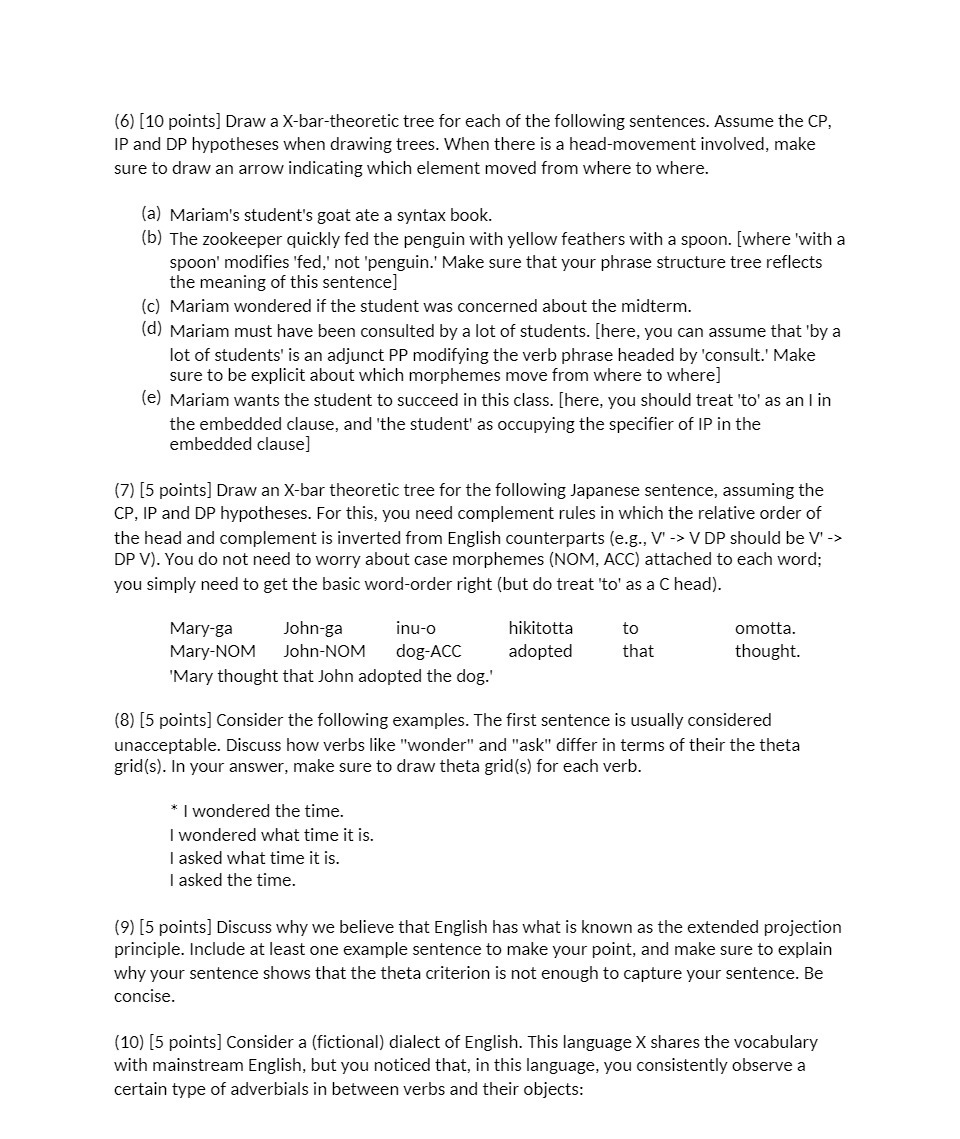(6) [10 points] Draw a X-bar-theoretic tree for each of the following sentences. Assume the CP, IP and DP hypotheses when drawing trees. When there is a head-movement involved, make sure to draw an arrow indicating which element moved from where to where. (a) Mariam's student's goat ate a syntax book. (b) The zookeeper quickly fed the penguin with yellow feathers with a spoon. [where 'with a spoon' modifies 'fed,' not 'penguin.' Make sure that your phrase structure tree reflects the meaning of this sentence] (c) Mariam wondered if the student was concerned about the midterm. (d) Mariam must have been consulted by a lot of students. [here, you can assume that 'by a lot of students' is an adjunct PP modifying the verb phrase headed by 'consult.' Make sure to be explicit about which morphemes move from where to where] (e) Mariam wants the student to succeed in this class. [here, you should treat 'to' as an I in the embedded clause, and 'the student' as occupying the specifier of IP in the embedded clause] (7) [5 points] Draw an X-bar theoretic tree for the following Japanese sentence, assuming the CP, IP and DP hypotheses. For this, you need complement rules in which the relative order of the head and complement is inverted from English counterparts (e.g., V' -> V DP should be V' -> DP V). You do not need to worry about case morphemes (NOM, ACC) attached to each word; you simply need to get the basic word-order right (but do treat 'to' as a C head). Mary-ga John-ga inu-o hikitotta to omotta. Mary-NOM John-NOM dog-ACC adopted that thought. Mary thought that John adopted the dog.' (8) [5 points] Consider the following examples. The first sentence is usually considered unacceptable. Discuss how verbs like "wonder" and "ask" differ in terms of their the theta grid(s). In your answer, make sure to draw theta grid(s) for each verb. * I wondered the time. I wondered what time it is. I asked what time it is. I asked the time. (9) [5 points] Discuss why we believe that English has what is known as the extended projection principle. Include at least one example sentence to make your point, and make sure to explain why your sentence shows that the theta criterion is not enough to capture your sentence. Be concise. (10) [5 points] Consider a (fictional) dialect of English. This language X shares the vocabulary with mainstream English, but you noticed that, in this language, you consistently observe a certain type of adverbials in between verbs and their objects







